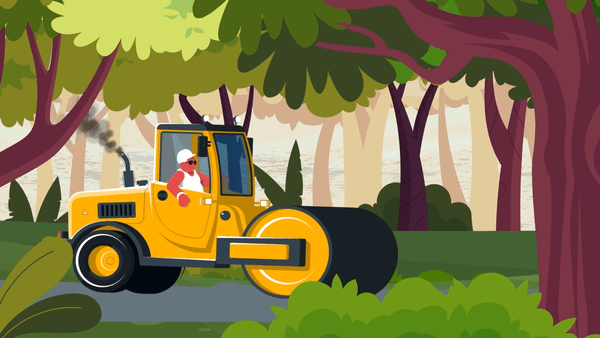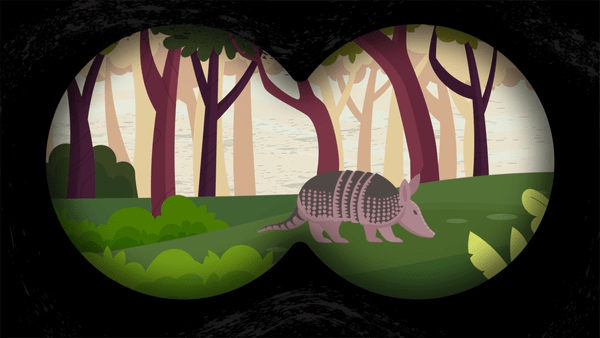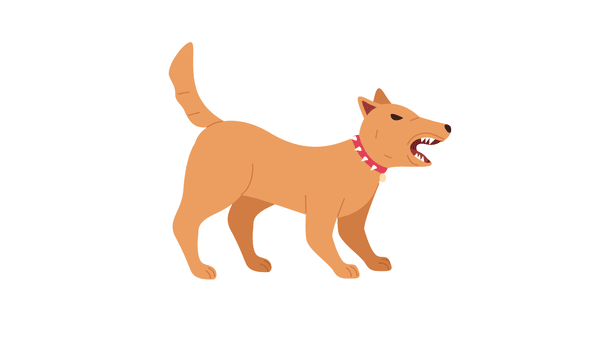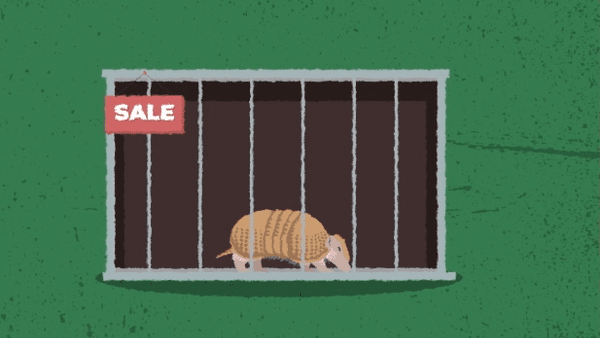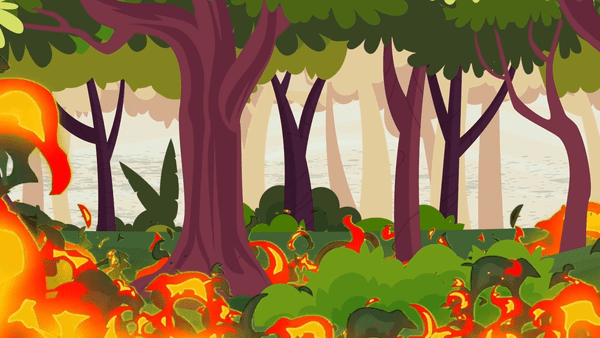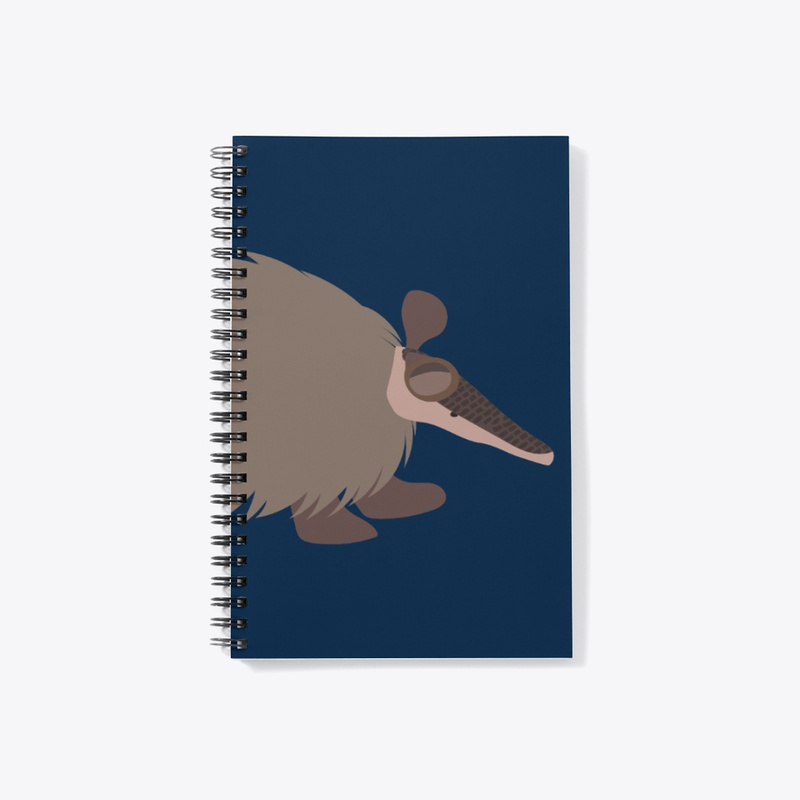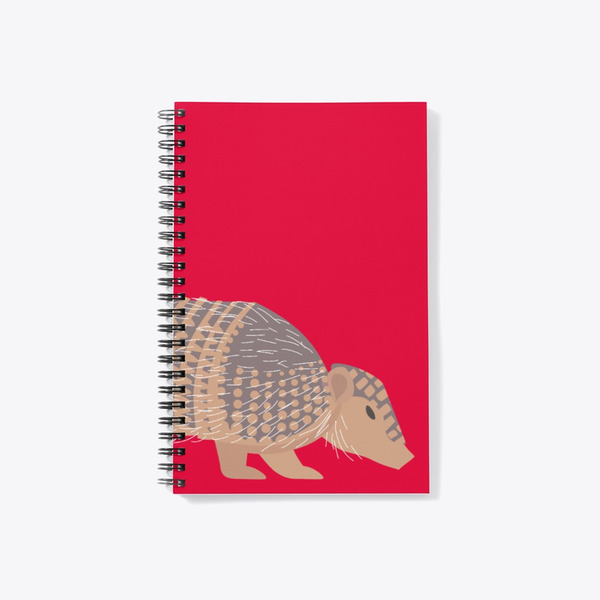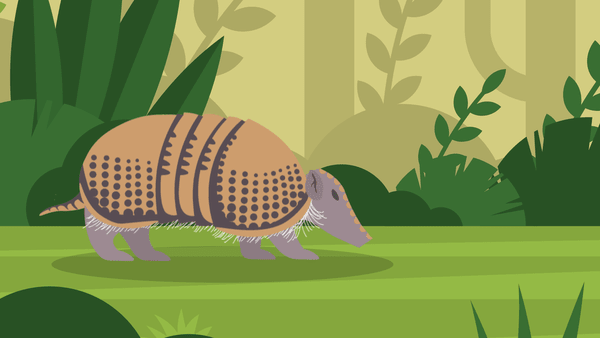
Brazilian three-banded armadillo
Tolypeutes tricinctus
Reproduction: Produces one, rarely two, offspring per litter.
Weight: 1–1.8 kg
Diet: Insectivorous feeding mainly on ants, termites, beetles and other insects, but may also eat some plant material.

Common Names
English – Brazilian Three-banded Armadillo
German – Dreibinden-Kugelgürteltier
Portuguese – Tatu-Bola
French – Tatou à trois bandes du Brésil
Spanish – Tatú-bola
How to Identify:
| Carapace | Rigid |
| Dome-shaped | |
| Sandy-yellow to brown | |
| Moveable bands | 2-4 |
| Tail | Triangular shape that fits perfectly with the triangle head |
| Other characteristics | Five clawed toes on the forefeet , with the third claw being the largest |
IUCN Red List
Species are classified into one of nine Red List Categories: Extinct, Extinct in the Wild, Critically Endangered, Endangered, Vulnerable, Near Threatened, Least Concern, Data Deficient and Not Evaluated. Vulnerable, Endangered and Critically Endangered species are considered to be threatened with extinction.

Brazilian three-banded armadillo Facts
- When threatened, the Brazilian three-banded armadillo has the habit of rolling into a ball. Although this is a behavior commonly attributed to armadillos, only the two species of Tolypeutes are capable of curling up into a perfect ball that cannot be opened by its predators.
- Was thought to be extinct until its rediscovery in 1988.
- Walks on the tips of its front claws
- Spends more time aboveground than other armadillo species
Habitat
- Savannah
- Shrubland
 Population Trend
Population Trend
• Decreasing
 Threats
Threats
- Habitat loss
- Hunting (food)
Here are some ways YOU can help keep armadillos healthy and safe:
– It is best to observe them from a distance and in silence.
– Our pets could attack them. It is important to keep your dog on a leash when you go for a walk, or keep your pets at home in an enclosed and safe area. In addition, taking care of our pets also means spaying and neutering them so that they do not breed without control.
– Another way to help protect the areas where armadillos live is by not starting fires.
– Armadillos love to live in nature, keeping them as pets is not good for them. Keep in mind that they don’t like selfies either.
– If you find an injured armadillo, contact a wildlife hospital so they can help it.
– Deforestation is often caused to make more land for livestock. Eating less meat may help save our forests.
Tolypeutes tricinctus can be found in the below country.
Click to learn what other xenarthran species live there too!
Test your new knowledge!
Test your new armadillo expertise by visiting our armadillo word search, puzzles, coloring sheets and name games!
Check out this video to see how much you have learned!
The Anteater, Sloth, Armadillo Specialist Group has a store that directly helps xenarthran conservation!


 Population Trend
Population Trend Threats
Threats